Wicker willow gazebo
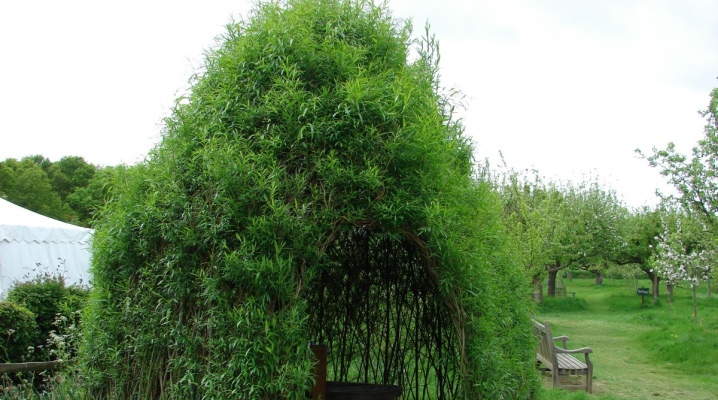
A shady gazebo in a well-groomed garden of a summer cottage or a country house will always be a welcome place to relax in the fresh air. It is not difficult to build it from anything, but only a structure made of natural material can become an organic part of the surrounding landscape. Wickerwork from willow branches is ideal for these purposes - they create a natural life-giving shade that artificial materials are unable to give.
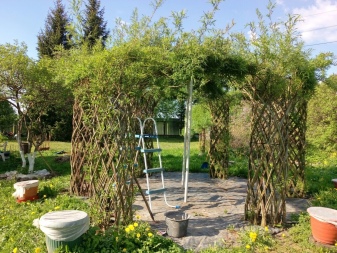

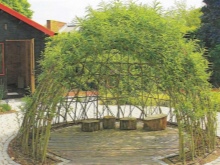
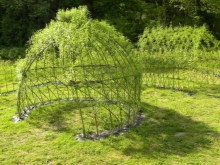
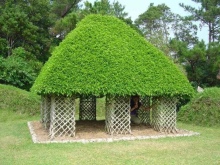
Peculiarities
Willow is a widespread plant, botanists count about 500 wild species of these trees. Those varieties that grow in the human habitat have received separate names - willow, willow, willow, vine. With willow branches, you can create a gazebo in two ways:
- to form a tree in the process of growth, purposefully placing flexible branches;
- weave a structure from a pruned vine.
In the first case, we will get living walls and a roof, in the second - a free-standing object, woven from twigs cut and prepared in a special way.
A feature of the gazebos produced by any of these options is that they end up being made without a single nail.
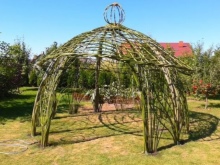
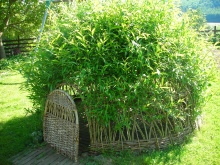

Suitable for a "live" gazebo Babylonian (weeping) willow - a tree of extraordinary beauty with long branches falling to the ground. Willow loves moisture and places filled with sunlight, it is resistant to frost. It grows up to 12 m, first leaves, and then flowers. If long flexible branches are properly formed and tied up, you can arrange a cozy gazebo under the weeping willow.
There is another suitable variety for creating living structures - American giant willow. Gazebos, arches, hedges are weaved from the branches of a growing tree. The willow grows quickly, releasing powerful shoots, in a year they reach a length of up to 2.5 m.In winter, all branches are cut from a one-year-old plant, the next year they grow up to 3.5 m.
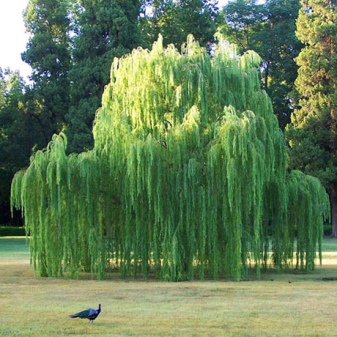

Anyone who wishes to weave a gazebo from a pruned vine must choose other types of plants. For these purposes, suitable Lithuanian variety - it has smooth, flexible, graceful rods. The tree does not grow overgrowth from the roots and does not litter the area. The variety "Belatau" beautiful white peel, a gazebo from it will turn out to be a light, unusual variety. Krasnatau the bark is burgundy-red, if you peel it off, the vine will turn out to be brown.

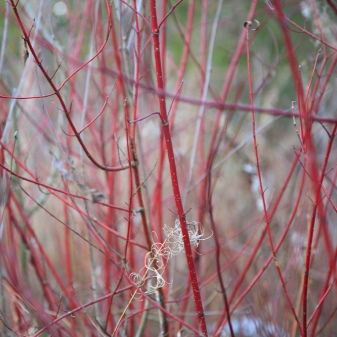
Execution stages
We will tell you how to make a "live" gazebo and a homemade wicker willow structure with your own hands. Each of these methods is attractive in its own way.
Weaving a gazebo from a vine
They choose a suitable place for the gazebo, do sketch of the structure. Then produce markup on the ground. For a light wicker gazebo no foundation is needed. It is enough to dig a hole 20 cm deep around the perimeter of the entire structure, place a layer of sand on the bottom, and then fill it up with rubble. Dumping from sand and gravel will become a good drainage, removing wet sediments from the gazebo.
Next, according to the drawing, they dig 4 pits for supports (up to 50 cm deep), sand and crushed stone are poured at the bottom. Metal or wooden posts are poured with concrete. When the cement is completely dry, the upper and lower piping of the gazebo is made, that is, the supports are connected to each other with horizontal beams, to which wicker walls will be attached in the future.
The roof can be made of any material, or a wicker shield made of vine can be installed - the same as on the walls.
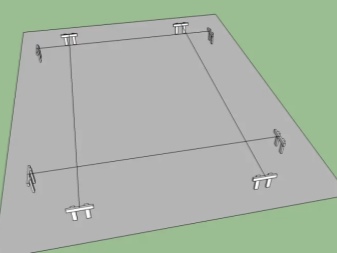

At the next stage, a frame for the walls is made from the planks; in finished form, it must correspond to the dimensions of the openings between the supports. You will need three identical frames, the fourth opening will become the entrance to the gazebo. Prepare rods with a diameter of 2-3 cm and a length corresponding to the parameters of the frame. The shoots are pre-boiled and soaked. Only work with damp material. If it dries up during weaving, it is sprayed with water every 10-15 minutes.
All willow elements are fixed with wire... First, vertical rods are installed and fixed on the frame. A horizontal vine is woven between them. To do this, vertical shoots are threaded with a rod, bypassing each of them from above and below, monotonously alternating weaving to the end of the frame. Thus, the frame element is filled to one wall. Then the second and third wall fragments are weaved, and if necessary, frames are weaved for the roof.... When the work is completed, the finished frames are installed in the openings between the supports.
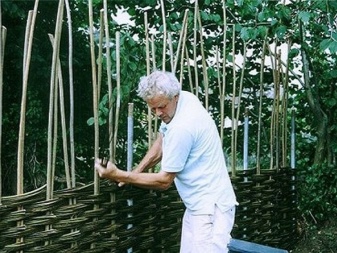
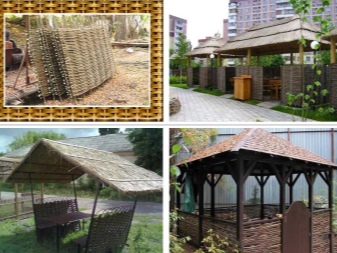
"Live" gazebo
To create a living structure, an open, sunny place is chosen. They make markings on the ground in the shape of a gazebo. With the same step along the marking, willow cuttings are planted to a depth of 30 cm. The structure will require 8-10 plants. In order for the willow to take root, it must be watered often - it loves water. In two or three years, the gazebo will be completely covered with vegetation.
As they grow, the shoots are formed and directed in the right direction. At the height of the canopy, the plants are slightly tilted towards the center of the structure, when they grow up and gather branches at the top point, they should be tied together with wire.
To give the gazebo clearer shapes, you can build a light frame made of thick wire, and then plant shoots. As they grow, it will be easier to guide them by tying the rods to the frame mesh.

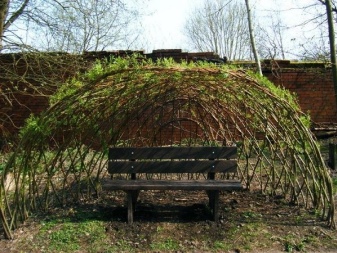
Maintenance of the structure
A "live" gazebo requires constant monitoring: the willow grows quickly and needs pruning. It is better to make the frame to the height of the raised arms so that you do not have to use a ladder. Cutting off excess growth is carried out while standing in the center of the gazebo. In dry times, plants need watering. A "living" building can delight its owners with beauty and comfort up to 60 years old.
As for artificially woven vine structures, they do not require special care - it is enough to periodically knock down dust with a pressure from a hose. Beautiful climbing plants can be planted around the gazebo: clematis, maiden grapes, Chinese magnolia vine, kirkazon, ivy, hops.
The willow gazebo in a live or artificially woven version will become a decoration of the garden and a favorite resting place for the whole family.
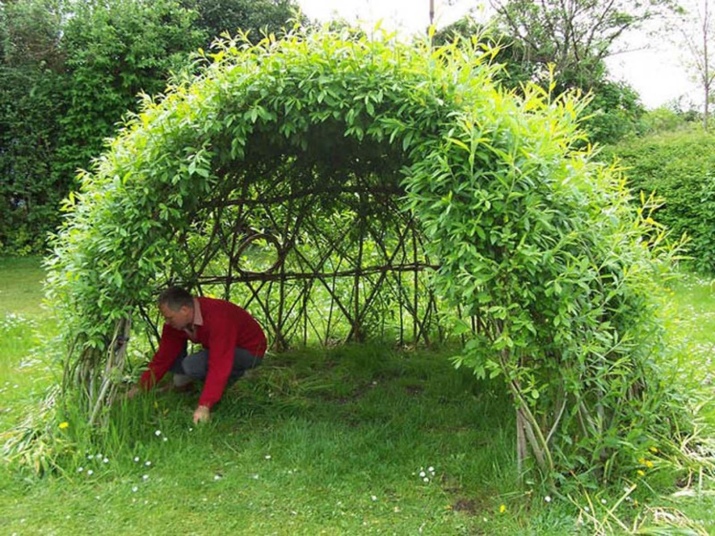

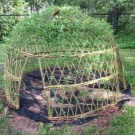
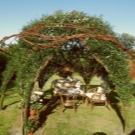
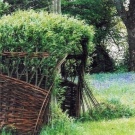
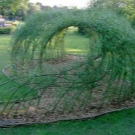
For the features of a wicker willow gazebo, see the next video.



































































The comment was sent successfully.